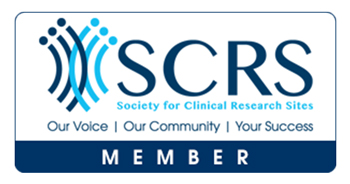Overview of Cancer Treatments
The choice of cancer treatment is influenced by several factors which include: the specific characteristics of your cancer; your overall condition; and whether the goal of treatment is to cure your cancer, keep your cancer from spreading, or to relieve the symptoms caused by cancer. Depending on these factors, you may receive one or more of the following:
- Surgery
- Chemotherapy
- Radiation therapy
- Hormonal therapy
- Targeted therapy
- Biological therapy
One or more treatment modalities may be used to provide you with the most effective treatment. Increasingly, it is common to use several treatment modalities together (concurrently) or in sequence with the goal of preventing recurrence. This is referred to as multi-modality treatment of the cancer.
Surgery
Surgery is used to diagnose cancer, determine its stage, and to treat cancer. One common type of surgery that may be used to help with diagnosing cancer is a biopsy. A biopsy involves taking a tissue sample from the suspected cancer for examination by a specialist in a laboratory. A biopsy is often performed in the physician’s office or in an outpatient surgery center. A positive biopsy indicates the presence of cancer; a negative biopsy may indicate that no cancer is present in the sample.
When surgery is used for treatment, the cancer and some tissue adjacent to the cancer are typically removed. In addition to providing local treatment of the cancer, information gained during surgery is useful in predicting the likelihood of cancer recurrence and whether other treatment modalities will be necessary.
Chemotherapy
Chemotherapy is any treatment involving the use of drugs to kill cancer cells. Cancer chemotherapy may consist of single drugs or combinations of drugs, and can be administered through a vein, injected into a body cavity, or delivered orally in the form of a pill. Chemotherapy is different from surgery or radiation therapy in that the cancer-fighting drugs circulate in the blood to parts of the body where the cancer may have spread and can kill or eliminate cancers cells at sites great distances from the original cancer. As a result, chemotherapy is considered a systemic treatment.
More than half of all people diagnosed with cancer receive chemotherapy. For millions of people who have cancers that respond well to chemotherapy, this approach helps treat their cancer effectively, enabling them to enjoy full, productive lives. Furthermore, many side effects once associated with chemotherapy are now easily prevented or controlled, allowing many people to work, travel, and participate in many of their other normal activities while receiving chemotherapy.
Radiation Therapy
Radiation therapy, or radiotherapy, uses high-energy rays to damage or kill cancer cells by preventing them from growing and dividing. Similar to surgery, radiation therapy is a local treatment used to eliminate or eradicate visible tumors. Radiation therapy is not typically useful in eradicating cancer cells that have already spread to other parts of the body. Radiation therapy may be externally or internally delivered. External radiation delivers high-energy rays directly to the tumor site from a machine outside the body. Internal radiation, or brachytherapy, involves the implantation of a small amount of radioactive material in or near the cancer. Radiation may be used to cure or control cancer, or to ease some of the symptoms caused by cancer. Sometimes radiation is used with other types of cancer treatment, such as chemotherapy and surgery, and sometimes it is used alone.
Hormonal Therapy
Hormones are naturally occurring substances in the body that stimulate the growth of hormone sensitive tissues, such as the breast or prostate gland. When cancer arises in breast or prostate tissue, its growth and spread may be caused by the body’s own hormones. Therefore, drugs that block hormone production or change the way hormones work, and/or removal of organs that secrete hormones, such as the ovaries or testicles, are ways of fighting cancer. Hormone therapy, similar to chemotherapy, is a systemic treatment in that it may affect cancer cells throughout the body.
Targeted Therapy
A targeted therapy is one that is designed to treat only the cancer cells and minimize damage to normal, healthy cells. Cancer treatments that “target” cancer cells may offer the advantage of reduced treatment-related side effects and improved outcomes.
Conventional cancer treatments, such as chemotherapy and radiation therapy, cannot distinguish between cancer cells and healthy cells. Consequently, healthy cells are commonly damaged in the process of treating the cancer, which results in side effects. Chemotherapy damages rapidly dividing cells, a hallmark trait of cancer cells. In the process, healthy cells that are also rapidly dividing, such as blood cells and the cells lining the mouth and GI tract are also damaged. Radiation therapy kills some healthy cells that are in the path of the radiation or near the cancer being treated. Newer radiation therapy techniques can reduce, but not eliminate this damage. Treatment-related damage to healthy cells leads to complications of treatment, or side effects. These side effects may be severe, reducing a patient’s quality of life, compromising their ability to receive their full, prescribed treatment, and sometimes, limiting their chance for an optimal outcome from treatment.
Biological Therapy
Biological therapy is referred to by many terms, including immunologic therapy, immunotherapy, or biotherapy. Biological therapy is a type of treatment that uses the body’s immune system to facilitate the killing of cancer cells. Types of biological therapy include interferon, interleukin, monoclonal antibodies, colony stimulating factors (cytokines), and vaccines.
Personalized Cancer Care
There is no longer a “one-size-fits-all” approach to cancer treatment. Even among patients with the same type of cancer, the behavior of the cancer and its response to treatment can vary widely. By exploring the reasons for this variation, researchers have begun to pave the way for more personalized cancer treatment. It is becoming increasingly clear that specific characteristics of cancer cells and cancer patients can have a profound impact on prognosis and treatment outcome. Although factoring these characteristics into treatment decisions makes cancer care more complex, it also offers the promise of improved outcomes.
The idea of matching a particular treatment to a particular patient is not a new one. It has long been recognized, for example, that hormonal therapy for breast cancer is most likely to be effective when the breast cancer contains receptors for estrogen and/or progesterone. Testing for these receptors is part of the standard clinical work-up of breast cancer. What is new, however, is the pace at which researchers are identifying new tumor markers, new tests, and new and more targeted drugs that individualize cancer treatment. Tests now exist that can assess the likelihood of cancer recurrence, the likelihood of response to particular drugs, and the presence of specific cancer targets that can be attacked by new anti-cancer drugs that directly target individual cancer cells.







